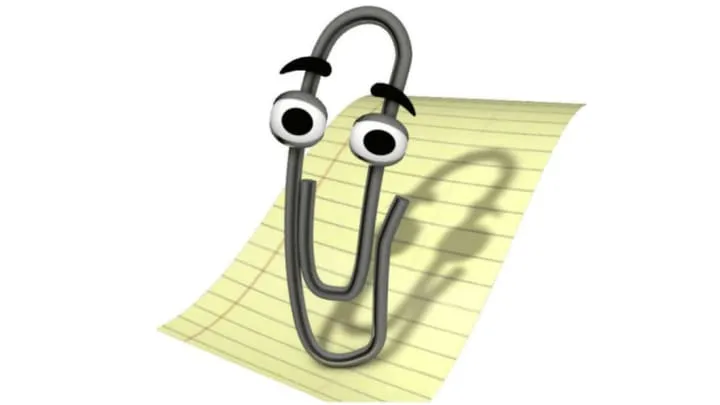From copilots to coworkers: Why your next colleague could be a bot?

Recently, Bill Gates said that AI will provide each of us with a white-collar digital assistant. This is from a man who already tried. In 1997, Microsoft introduced Clippy, an animated assistant in Microsoft Word. (If we’re looking back, let’s not forget Microsoft Bob, an early attempt at a user-friendly Windows interface.)

An early Microsoft “digital assistant”
Failed attempts aside, the motivation is clear: An AI assistant could re-platform how people interact with technology. Stepping between users and search bars or email clients, an assistant could become the primary interface for technology. For major tech companies, this is an opportunity they can’t afford to lose.
We’ve already seen a steady stream of contenders, from Siri and Alexa to Cortana. The current boom in AI will undoubtedly lead companies to upgrade these assistants with new capabilities.
But at work, employers have been trying to do more than provide us with helpful assistants. They've been trying to get these assistants to replace us. In this article, we'll trace a brief history of the efforts to automate processes and the employees who do them. And we'll look at how the fast-evolving world of LLMs could give this initiative a boost.
UIs and Clicks: Robotic Process Automation
In the 1990s, when graphical user interfaces were “thick” and automation rudimentary, testing new software meant manually mashing the same 15 buttons repeatedly. For companies that invested in user interface testing tools like WinRunner or SilkTest, you could at least automate the repetitive button mashing.
By the 2000s, these tools advanced to scrape screen data and use that information to determine which buttons to mash. Although still very rigid, for industries like banking and insurance that processed high volumes, automation began to make sense for churning through hundreds or even thousands of documents.
This period also marked the emergence of robotic process automation, or RPA, with companies like Blue Prism (founded in 2001) and UiPath (founded in 2005). The term “RPA” itself wasn’t coined until 2012 when analyst Phil Fersht published a report on the technology. The RPA industry plodded along until around 2018 when it became red hot. Customers warmed to the potential of automating mundane tasks and rewarded vendors with robust solutions. In under two years, UiPath’s revenue skyrocketed from $1 million to $100 million, allowing it to raise $255 million in funding in 2018 at a $3 billion valuation.
Subscribed
Intelligent Automation: Making the robots smarter
But merely mashing buttons in a preprogrammed sequence is useful for data entry and other basic tasks. To become far more useful, software robots need the ability to read faxes, understand requests, and respond appropriately. Vendors began pairing RPA with machine learning capabilities. Using optical character recognition (OCR), RPA could help read photos, scans, and faxes. Basic natural language processing (NLP) allowed software robots to “understand” text and determine which workflow to follow based on the request.
This combination of RPA and machine learning, known as intelligent automation, demonstrated that software bots could do more than move cursors and enter fields. They could also read, assess, extract, and act on information in the messy, complex formats that represent most data in the real world.
Take Expion Health, for example. This Gaithersburg, Maryland-based healthcare cost management company analyzes medical services cost information for its customers. But sometimes, forms are submitted as PDFs or on paper. The manual processing of these forms limited the company to handling only 75 paper claims per day. By integrating an intelligent automation solution built on UiPath, they increased their processing capacity to up to 500 claims per day and lowered costs.
The digital worker
But why stop at task automation? By combining RPA with AI, and adding a bit of marketing chutzpah, you get Digital Workers - software entities that can handle entire jobs, not just tasks.
Let's look at the description of a Digital Worker from WorkFusion's website.
What’s an AI Digital Worker?
AI Digital Workers are a pre-built, AI-powered, digital workforce. They come off the shelf fully trained and immediately productive to scale AML compliance programs quickly and cost-effectively. They work side-by-side with human colleagues to fulfill entire L1 job roles, tackling repetitive activities and freeing up the team to work on higher-value work. They are location agnostic, don’t take time off, don’t get sick or even sleep.
 WorkFusion Website
WorkFusion Website
Want one? Companies like WorkFusion offer digital workers for hire on their websites. For example, Evelyn is a sanctions and adverse media screening analyst, diligently checking watchlists no matter how tedious. Kendrick, on the other hand, is a Customer Identify Program analyst. His specialty is making sure your customers are who they say they are. These digital workers come pre-trained to use your existing software. At Automation Anywhere, you can hire an SAP Accounts Payable Clerk or a Google Cloud IT admin.
 Evelyn: from the WorkFusion Website
Evelyn: from the WorkFusion Website
“The future of autonomous agents looks like everybody becoming a manager.”
Yohei Nakajima, creator of BabyAGI
LLMs, Agents, and Digital Workers
Companies like WorkFusion (founded in 2009. raised $341M to date) built their platforms on technology that predates the current world of LLMs. According to Markets and Markets, the market for business process automation technologies — technologies that streamline enterprise customer-facing and back-office workloads — will grow from $9.8 billion in 2020 to $19.6 billion by 2026.
Investors have noticed. Adept AI, a company founded in 2022, has already raised $415M for their custom action model ACT-1 that can automate the tools you already use. Over on the open-source front, projects like SuperAGI, AutoGPT show the early possibility of autonomous agents that can take jobs and decompose them into tasks.
In the coming weeks, we’ll delve deeper into the world of autonomy with agents and how this could apply to businesses.
We’ll end this week with a poem by ChatGPT on the evolution of RPA, Intelligent Automation, and Digital Workers.
In the land of automation, a tale I'll spin,
Of skills lost to robots with a cheeky grin.
First, they came for my data entry skills so neat,
I shrugged and said, "Sure, go ahead, take a seat!"No more mashing buttons, no more endless grind,
I welcomed the bots, leaving boredom behind.
But then they came for my handwriting reading prowess,
And I rejoiced, "Hallelujah! Let the machines impress!"Gone were the days of squinting and decoding,
Robots stepped in, with accuracy exploding.
But little did I know, the plot would soon shift,
As they set their sights on skills more complex, a drift.Next, they came for my analytical mind so sharp,
I protested, "No way, this task's too smart!"
But the bots didn't flinch, they dove right in,
Crunching numbers, analyzing without a chagrin.I watched in awe as they dissected the stats,
Unraveling patterns with unfathomable pizzazz.
I thought I was irreplaceable, oh what a delusion,
For the robots proved that they too could find a solution.
Want these insights delivered? Subscribe below.
